What is the best camera app for iPhone? While the stock iOS camera is sufficient for most, those looking for something with a little more power and flexibility should consider using an alternative camera app. It can be overwhelming sifting through all the camera apps currently offered on the App Store. So here is a list of worthy replacements to consider, which will help you narrow down the search and provide you with the ability to make an informed decision when it’s time to upgrade your iPhone camera app.

While the majority of these apps do include editing tools and filters, this article will mainly be focused on capturing images.
Things to Consider
The largest difference between the stock iOS camera and most alternative ones available on the App Store is the ability to individually set the exposure and focus when snapping a photograph, which helps ensure a photo comes out sharp and with the right amount of brightness.
The other major factor that separates the stock iOS camera from ones like Camera+, ProCamera 7, and PureShot is that the latter all have the ability to save a captured image in a less compressed format. Without getting too much into detail, a less compressed image is generally preferable as it allows for a bit more freedom when choosing to edit an image, and will also preserve a little more detail afterwards.
Whether there is a noticeable difference to the naked eye between “compressed” and “uncompressed” images is a moot point. Serious iPhoneographers will naturally be inclined towards using an alternative camera app that minimizes the quality degradation of their photos.
Lastly, since the majority of the alternative camera apps perform similarly, in order to choose the best iOS camera replacement app unique offerings like aspect ratio capture formats, histograms, grids, and other features will be considered.
The Contenders
This is not an exhaustive analysis of all available camera apps, there are new ones appearing regularly and including every replacement camera app would be an extremely daunting task. Therefore, what follows is a consideration of the most popular camera replacement apps available.
Camera+
Perhaps the most perennial camera app available in the App Store, Camera+ by tap tap tap is a great alternative to the stock iOS camera. It is packed with the usual features, including the ability to set exposure and focus individually, exposure compensation during shooting by up to +/-2EV, a 6x zoom, ISO information, an option to shoot with stabilization, and a choice to capture images in three levels of quality.
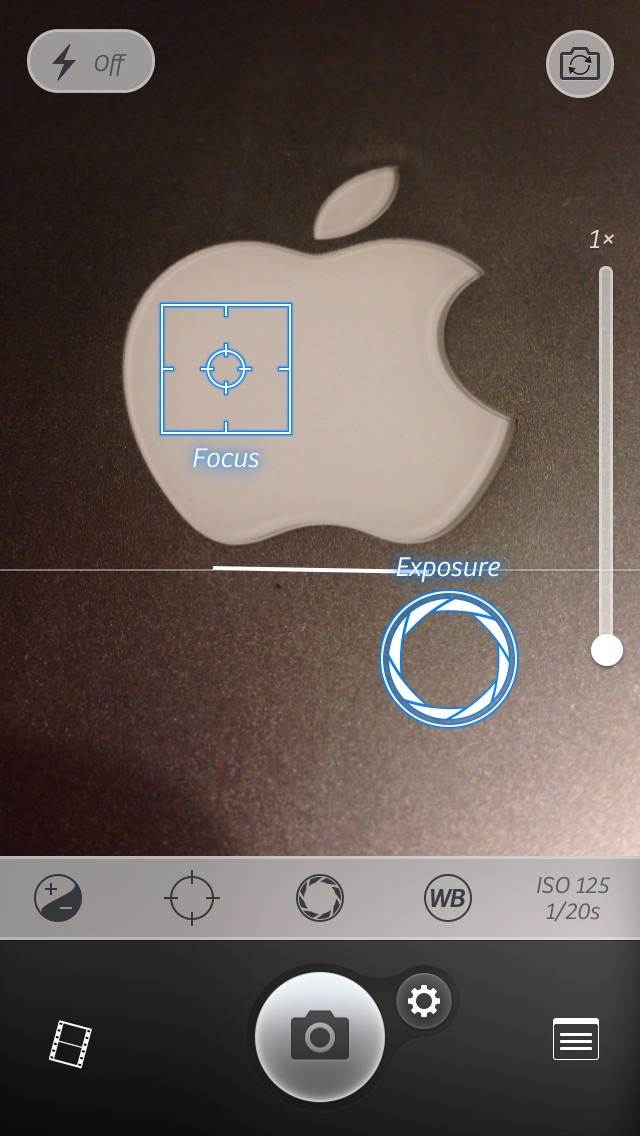
One thing that Camera+ does not have is the ability to shoot video. To many iPhoneographers this is not a deal breaker, but not having an option to record video on occasion may steer potential users to other camera replacement apps that do have that option.
Also, with regards to shooting quality, Camera+ offers three choices: High, Normal, and Optimized, with High having the highest quality and thus the largest file size. While High is a great choice for those looking to improve the quality with which they capture images, many other camera apps are now including the TIFF file format, a very large and uncompressed image file, which is still missing from Camera+.

Finally, Camera+ gives the user a choice of saving captured images to the iPhone’s Camera Roll, or having them accumulate in its Lightroom, which can be thought of as a holding area for photographs and is useful for sorting through images before saving them to the Camera Roll.
ProCamera 7
Another well designed camera app for iPhoneographers, ProCamera 7 has all the features expected of an alternative camera app, as well as a few additional ones that allow it to stand out a bit among all the available camera apps on the App Store.
ProCamera 7 contains all the typically expected features. Exposure and focus can be set individually. There are a variety of aspect ratios to choose from when capturing images, including 4:3, 3:2, 16:9, 1:1 and 3:1 and aspect ratio. There is also a 6x zoom, and a few shooting modes, including Anti-shake, Self-timer, and a Rapid-fire burst for action shots.
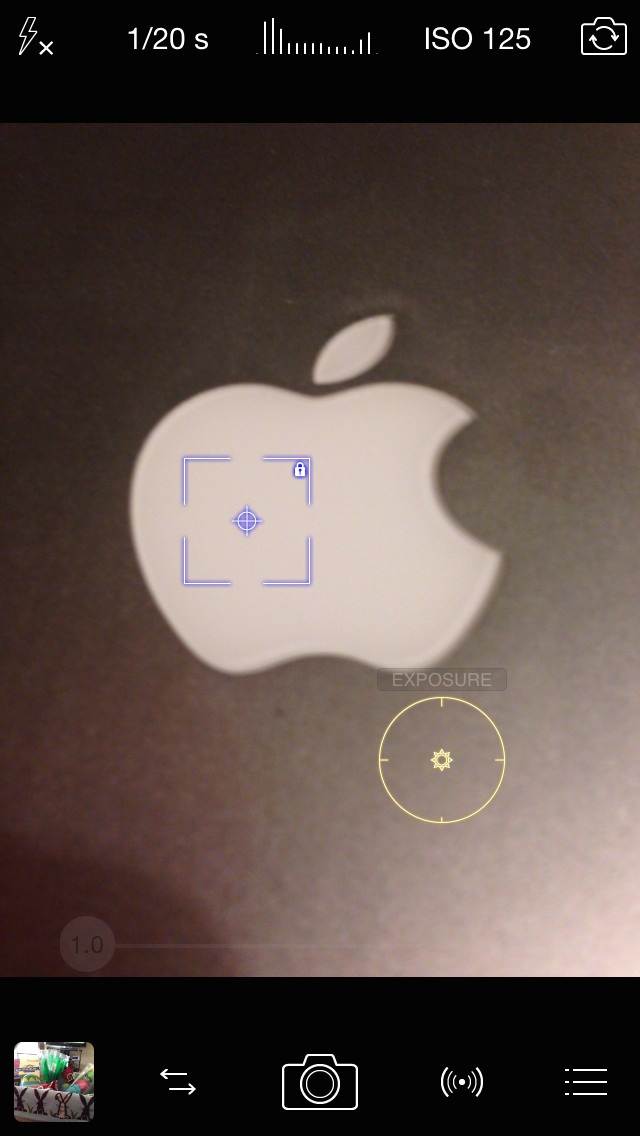
While similar in nature, there are a few features that separate ProCamera 7 from other available camera apps.
Firstly, ProCamera 7 has recently been updated and has added the option of saving images in the highly coveted TIFF format. While considered to be the best available image quality option, the files do take up a larger amount of space on the iPhone. Also, seeing as a serious iPhoneographer will most likely be editing the photo afterwards, it is important to note that while an abundance of editing applications exist in the App Store, not all of them work with TIFF files.
Specifically, while many editing apps are able to open the TIFF file to edit, they save it back to the Camera Roll as a JPEG, essentially defeating the original purpose of saving an image in TIFF format.
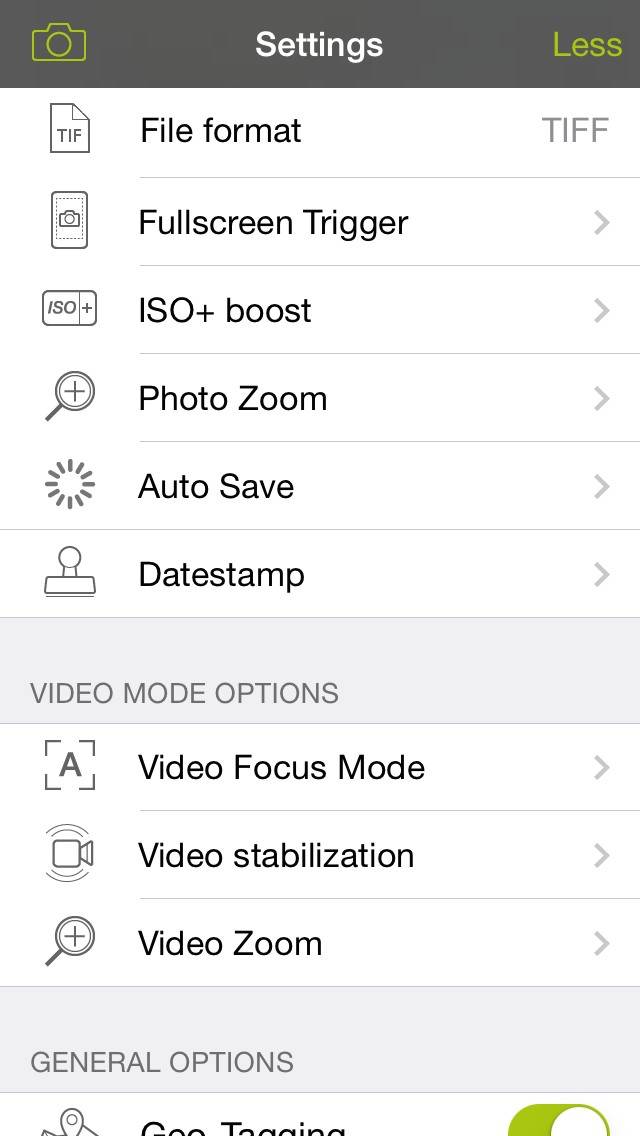
Another unique feature that ProCamera 7 includes is the ability to shoot video, as well as capture images while recording video. As previously mentioned, being able to shoot video is often not a top priority for an iPhoneographer, but it is nice to have the option to do so in case a moment arises. As with the image saving options offered by ProCamera 7, there are several resolutions available for video (VGA, 720p, and 1080p), along with a choice of frame rates (24fps, 25fps, and 30fps).
Finally, ProCamera 7 has the unique ability to read bar codes and QR codes. Again, not a feature that specifically impacts photo taking capability, but definitely a bonus to those who are always comparison-shopping and looking for deals.
PureShot
The most noticeable difference, when compared to Camera+ and ProCamera 7, is the design of PureShot. Aside from its icon, it does not follow the flat design of iOS 7. Other than that difference, PureShot contains many of the same features.
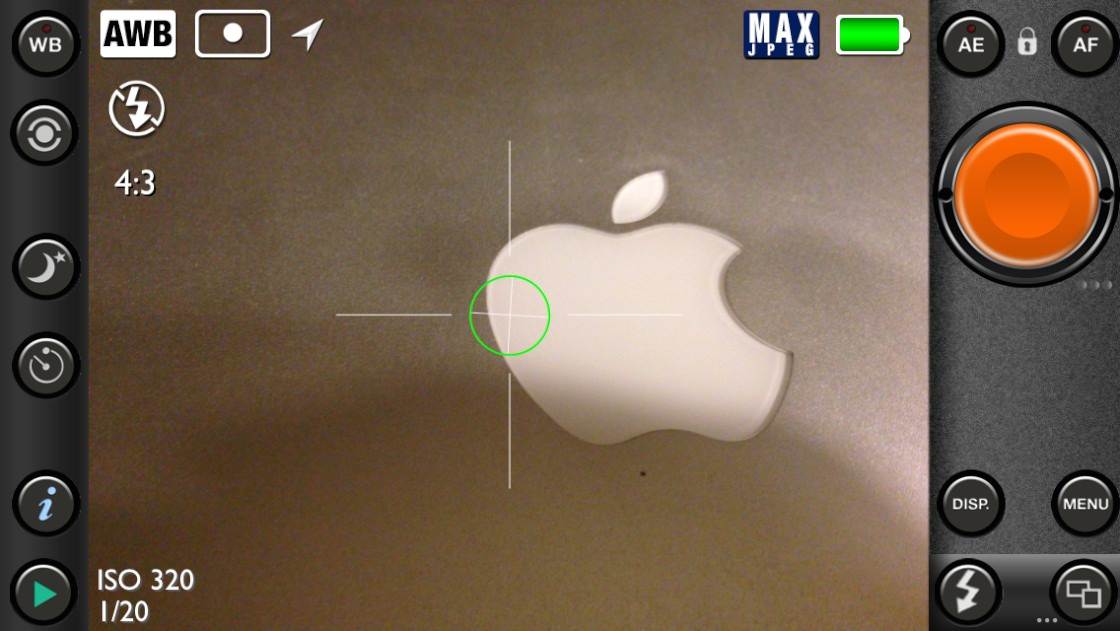
You have the ability to set exposure and focus individually, ISO information is displayed on-screen as you shoot, and there is a night mode option for longer exposure times during low-light conditions.
What gives PureShot its uniqueness is the added function of a 3-shot bracket, which enables the user to select two additional points of exposure in order to shoot three differently exposed images that can later be combined into a single High Dynamic Range (HDR) photo.
Also unique to PureShot are the two available options for releasing the shutter button. After the user taps and holds the shutter button to lock the exposure and focus, they can either tap a second time to release the shutter or simply release the shutter once the finger is lifted off the button.
As for the quality, PureShot offers three choices: Hi-Quality JPEG, often best for everyday shooting. Max-Quality JPEG, which has minimal image compression but a larger file, and finally, PureShot offers dRAW TIFF, which has no JPEG compression.
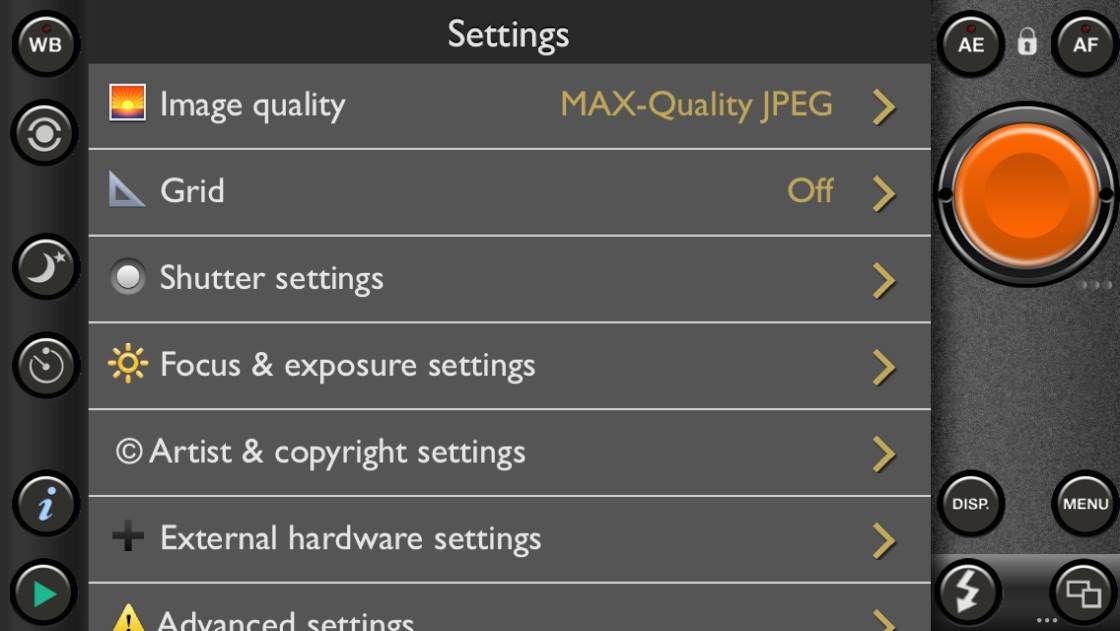
While overall PureShot is an excellent alternative camera app, it can be viewed as being geared towards the more serious iPhoneographer because it offers settings that might not be needed by everyone, such as four types of histograms, shutter speed adjustments, and a couple of external hardware settings to use with a DSLR lens mount.
For the everyday shooter, PureShot may seem a bit overwhelming with its extra features and refinements. If that is the case, there are plenty of alternatives that offer an amazing user experience with a more user-friendly approach. To those interested in tinkering with additional settings, PureShot is an excellent alternative to the stock iOS camera.
The Rest of the Pack
Two specialty shooting camera apps available in the App Store are Cortex Camera by Whimsical Productions, and ClearCam by Occipital Inc. What separates these two shooters from the rest of the camera apps is that they take several photos of a scene and combine them to process out noticeable sensor noise and deliver sharper photos.
As of right now, ClearCam has not been updated since April 2013, while Cortex Camera was just updated, so purchasing Cortex Camera would be a wiser choice since this app is still being supported.
Final Conclusion
I highly recommend ProCamera 7 as the best iOS camera replacement app. While I do keep several different camera shooting apps on my iPhone, ProCamera 7 is the only one not tucked away in my “Photography” folder, and instead occupies a place on my home screen so I can quickly access it. I have found it to crash the least and work the smoothest, two factors that are important to me when it comes time to capture an image.
As previously mentioned, the camera replacement apps offered on the App Store are similar in function and also share many common features. For a user who wants the simplest experience, Camera+ would suit their needs well. For those looking for more advanced settings and functions, ProCamera 7 and PureShot would be better options mainly because both offer the option of capturing an uncompressed image, which is something that Camera+ does not have right now.
Finally, for an all-around great experience, I recommend ProCamera 7. It has advanced settings for serious iPhoneographers, and it also includes additional features that make it ideal for everyday use.


Thank you Timothy for sharing this great comparison!
The one thing that I would add is that Camera+ has the ability to take photos using the volume buttons while ProCamera 7 does not have that functionality. To me this makes a huge difference, which is why I prefer Camera+ over ProCamera 7.
@iphoneps:disqus – it’s a personal preference to shoot with the Volume Trigger. I personally prefer the fullscreen trigger offered by ProCamera 7 as it results in less camera shake than having to press on the hardware button. It’s also much easier to trigger. Also, as you well know this feature is not approved as part of Apple’s guidelines. With some apps getting it through the review process and others unable to based on unknown factors.
Highlighting features that some apps can have and other can’t isn’t very fair.
Of course, it’s a personal preference, but to me it’s important.
I know Apple has a strange policy about the volume shutter release, but I really hope you can make it work some day 🙂
All three of those are great apps, but I somehow prefer Procamera7 and Pureshot. Pureshot because I manage to get 300 dpi quality and Procamera7 because it is just easy to use, I can change the image type and somehow it appears to take awesome pics no matter the time. Side note, I just love the photos both Emil and Misho takes. I take detail notes.
You still get the same resolution in all the apps, so that 300dpi doesn’t rally mean anything. Happy to hear you like my photos!
VividHDr must be included in the conversation, the finest HDR shooter out there by far. Also Mpro, the finest dedicated b&w shooter by a mile.
Those are great apps as well, but they’re not general purpose like the ones mentioned in this article, which is why I think the author left them out 🙂
Hey,I know that this is iPhone school
I am having iPhone
dont you have some tips?
I meant Android
I think the major oversight here is 645 Pro – many more image format choices, films, and filters – and too many other features to mention.
And too many options on the screen to navigate that thing – in my opinion 🙂
I disagree – the on screen icons force you to understand what the iPhone is capable of – a lot of people shoot blindly and if they want better photos should understand concepts like exposure, white balance and focus options – like anything, a bit of reading and going through the tutorial will “demystify” concepts that might at first seem alien or confusing – it is clearly not the app for spontaneous shots, but for well composed and executed shots, is the best app out there – it is also a useful “gateway” app for those interested in DSLR cameras.
Yes, its not suited for quick, impromptu shots. Geared more towards unrushed shots where u hv the luxury of time in adjusting all the important stuff in advance.
645 Pro is a great app. I used it for a year. But I prefer a camera app with a very simple screen layout. 645 was a bit too busy for me.
Then I started trying Camera+. Although image quality is very good and its filters are great, each time when i want to take an important pic (with a static subject), this featured-packed app was not intuitive to use. I know its a great app, but somehow, i just dont feel like using it each time i want to take an important shot.
On my 5S, I’d reflexively open CLEARCAM when I need to take a great quality shot of a non-moving subject. Hands down, its my fav. So instinctively easy to use! And the resulting photo is the best I’ve encountered on the Iphone.
Wonderful app.
Hi,
I use both Camera+ & Pro camera7. What I really like about Camera+ is that you can use the volume button on your iPhone to take a photo. Just like the standard camera app on the iPhone. Something you can not do with ProCamera7. Would be great if thos was possible on more camera apps.
That’s why I prefer Camera+ as well, it makes a huge difference to me 🙂
My only issue with using the volume button, is that it takes quite a hefty push, which could lead to camera shake & a slightly blurry image, something I have encountered with the standard iPhone app, despite taking great care to avoid it.
What you could do is use the volume buttons on your white Apple headphones, which completely eliminates the shake problem.
I use a Muku Shuttr for shutter release as it’s completely wireless. Very handy for wanting to have yourself in photos at events as an example. 🙂
It’s a great little device – but only if the app supports volume button shutter release 🙂
Thanks for the great comparison. Though what I miss here is Huemore and Hueless. Of course Hueless is an bw only cam, so I understand it was not included here. But Huemore is actually a very good general purpose cam. There are quite a few options that are not in the way if one wants just to take a quick shot, but are there where you need them. Such as: jpg and tiff, separate focus and exposure but also adjusting the overall brightness, contrast and color scheme, some warming and cooling filters, the ability to save adjustments and quickly switch between them, various grids, switch between shooting button, full screen tap and volume shutter (or the Volume button of the earphones) and some more. Huemore is left out from many camera comparisons and I don’t really understand why. Take a look at it or even give it a try. I am very satisfied with it. Also there is quick response by curioussatelite the producer of Huemore and Hueless if you have any questions.
Thank you for the review. I do have a question related to you saying “Specifically, while many editing apps are able to open the TIFF file to edit, they save it back to the Camera Roll as a JPEG, essentially defeating the original purpose of saving an image in TIFF format.” If we talk about TIFF as a non compressed format, would not allow for a better editing? I see it as shooting in RAW, using lightroom and then export in jpeg. Would you consider this as derating the whole point to shot in raw? did I miss something?
ProCamera 7 is also my favorite and has a place in my home screen. Camera+ is a very good app but I really don’t like it saves pics in its lightroom.
You can turn it off in Settings if that’s a problem for you.
Hello Emil, what can you say about Mattebox? Its worth the pay or not? What is your opinion about it? Thanks 🙂
Hey guys you should check out Real Camera app https://itunes.apple.com/app/id956239515.
It’s free and it allows you excellent control over the camera with very simple and intuitive controls
Another lovely camera app is TADAA.
My favourite app for quick shots when I great quality with no time to adjust anything. I also noticed that TADAA photos have much lower noise when used in low-light scenarios. So its my ONLY fav app for low-light shots. Its great filters also do not degrade or muddy-up the original file. Lovely stuff!
Thanks for the input – it’s always great to hear which apps other iPhone photographers like to use 🙂
Few more shots captured via TADAA…one of my fav for low light shots. Very low noise.
The current version of Camera+ does support the TIFF format.
Right now I am very disappointed with Camera+ and will probably seek a refund for two reasons. One is there not being any official support. I have searched the web trying to get an answer to a question to no avail. The question is how do you get the TIFF off the phone and onto the desk top? If I don’t get an answer, or it isn’t possible, this apps going back.